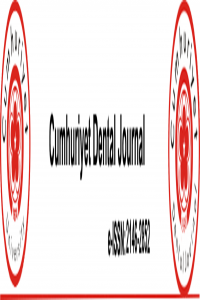Abstract
The aim of this study was to evaluate the light transmission of different types and thicknesses of composites. Disk-shaped (N = 240, n = 10 per group) samples of ten direct composites (Aelite-Aesthetic -Enamel, Aelite-LS-Posterior, Aelite-All-Purpose-Body, Clearfil-Majesty-ES-2 Classic, Filtek Ultimate-Enamel, Filtek Z-250 Universal, G-ænial Anterior, Gradia Direct, IPS Empress Direct, and Tetric N-Ceram) and two indirect composites (Estenia C&B and Signum-Ceramis) with diameters of 10 mm and thicknesses of 1 and 2 mm were fabricated. The translucency of each sample was determined with a digital radiometer using the direct transmission method and a 1200 mW/cm2 LED beam as the light source. Measurements were repeated three times for each specimen, and the obtained data were analyzed using ANOVA and Duncan multiple range tests (α = 0.05). The materials with the highest light transmission values included the Filtek Ultimate-Enamel (1 mm: 8.36 lux, 2 mm: 4.62 lux), Gradia Direct (1 mm: 8.57 lux, 2 mm: 4.65 lux), and Tetric N-Ceram, while those with the lowest light transmission values included the Aelite-All-Purpose-Body (1 mm: 2.89 lux, 2 mm: 1.21 lux) and Estenia C&B composites. The type of composite, as well as the particle size and filler content, significantly affected the light transmission characteristics.
Abstract
The aim of this study was to evaluate the light transmission of different types and thicknesses of composites. Disk-shaped (N = 240, n = 10 per group) samples of ten direct composites (Aelite-Aesthetic -Enamel, Aelite-LS-Posterior, Aelite-All-Purpose-Body, Clearfil-Majesty-ES-2 Classic, Filtek Ultimate-Enamel, Filtek Z-250 Universal, G-ænial Anterior, Gradia Direct, IPS Empress Direct, and Tetric N-Ceram) and two indirect composites (Estenia C&B and Signum-Ceramis) with diameters of 10 mm and thicknesses of 1 and 2 mm were fabricated. The translucency of each sample was determined with a digital radiometer using the direct transmission method and a 1200 mW/cm2 LED beam as the light source. Measurements were repeated three times for each specimen, and the obtained data were analyzed using ANOVA and Duncan multiple range tests (α = 0.05). The materials with the highest light transmission values included the Filtek Ultimate-Enamel (1 mm: 8.36 lux, 2 mm: 4.62 lux), Gradia Direct (1 mm: 8.57 lux, 2 mm: 4.65 lux), and Tetric N-Ceram, while those with the lowest light transmission values included the Aelite-All-Purpose-Body (1 mm: 2.89 lux, 2 mm: 1.21 lux) and Estenia C&B composites. The type of composite, as well as the particle size and filler content, significantly affected the light transmission characteristics.
Details
| Journal Section | RA |
|---|---|
| Authors | |
| Publication Date | November 6, 2015 |
| Submission Date | November 6, 2015 |
| Published in Issue | Year 2016 Volume: 19 Issue: 3 |
Cumhuriyet Dental Journal (Cumhuriyet Dent J, CDJ) is the official publication of Cumhuriyet University Faculty of Dentistry. CDJ is an international journal dedicated to the latest advancement of dentistry. The aim of this journal is to provide a platform for scientists and academicians all over the world to promote, share, and discuss various new issues and developments in different areas of dentistry. First issue of the Journal of Cumhuriyet University Faculty of Dentistry was published in 1998. In 2010, journal's name was changed as Cumhuriyet Dental Journal. Journal’s publication language is English.
CDJ accepts articles in English. Submitting a paper to CDJ is free of charges. In addition, CDJ has not have article processing charges.
Frequency: Four times a year (March, June, September, and December)
IMPORTANT NOTICE
All users of Cumhuriyet Dental Journal should visit to their user's home page through the "https://dergipark.org.tr/tr/user" " or "https://dergipark.org.tr/en/user" links to update their incomplete information shown in blue or yellow warnings and update their e-mail addresses and information to the DergiPark system. Otherwise, the e-mails from the journal will not be seen or fall into the SPAM folder. Please fill in all missing part in the relevant field.
Please visit journal's AUTHOR GUIDELINE to see revised policy and submission rules to be held since 2020.

